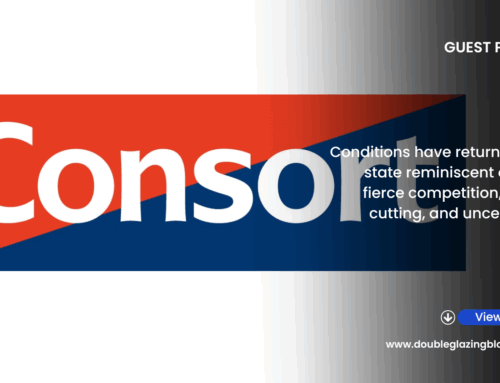You can feel the strain between the different levels of the supply chain right now. Fabricators are becoming frustrated with system companies. Installers are already frustrated with fabricators. The last 12-18 months has certainly put a strain on us all and across the supply chain.
But those relationships are coming under increased pressure, and there are accusations of profiteering and some taking advantage of the current market situation.
A lot of this comes down to knowledge and what we know, or don’t know, about the supply chain itself. This is where the sector needs to educate itself.
Know more about each other
Running a business in UK fenestration right now is a very difficult task. Whether you’re an installer trying to plan and schedule four months of fitting, a fabricator trying to service hundreds of customers, or a systems company trying to ensure you get a solid supply of raw materials to see you through the next quarter. We’re all incredibly busy trying to make sure our own businesses are working.
What has become clear over the last year or so is the fact that we perhaps know very little about how other businesses in the supply chain work. We know how are customers are, and we know who our suppliers are. But do we really know, on mass, how each other’s businesses actually work on a day to day basis?
Given the massive disruption in the supply chain at the moment, I think this is a very good time to start learning how the supply chain in our industry actually works.
For installers, this is knowing how a fabricator actually works. How they get their deliveries, how the production line functions, what it costs to run a factory, employ staff, what overheads they have etc. At the moment, fabricators are coming in for a lot of flack when they issue price increase notifications, with accusations of profiteering and making more than they should be from the ongoing situation. If installers knew more about what it really takes to run a fabrication business, perhaps there would be less anger about current price increases and even a better relationship between the two parties.
Two-way relationships
It works both ways. It pays for an installer to know how a fabrication business runs. But it is very much worth knowing how an installations business works in detail if you are a fabrication company.
Some do. Some businesses take the time to get to know their installers well and spend some time with them to increase their knowledge of their client. But some don’t. And that means the communication links between the two parties are not as good as they should be.
If the manufacturing supply chain knew in better detail how installation businesses worked on the ground, how decisions at their level affected installers, then perhaps better and more informed decision making could take place. Communication would certainly be improved, and both parties could then work together to combat issues. Speak with each other, rather than at each other.
The same applies to systems companies and glass systems companies and their own clients. Having full knowledge of how their own clients work at a detailed level would help them to run their own businesses better.
At the moment, frustration from installation companies is spilling out into social media and online forums at the sheer number of price increases. There are a growing number of accusations that companies are jumping on bandwagons and seeking to make more than is reasonable. Speaking with my installer hat on, I can confirm that the price increases continue to come in thick and fast, and the last set we have had, namely for silicones, roofline products, glass and profile have all been hefty. That is on top of all the other hefty ones we have had this year.
But whilst it is frustrating to see prices rise so quickly, I know from speaking with fabricators who have been willing to share quite detailed breakdowns of what is currently happening with their own businesses, the situation on the ground isn’t matching the accusations. I am sure there will be some out there making the most of this right now, but I believe that they are the minority, rather than the majority.
So perhaps there is a hint there for manufacturers. Elaborate on statements about supply chain problems and a lack of this or missing that, explain, even in public if necessary, what actual operational problems this creates. The whole world knows about supply chain problems, but better explanations and finer detail communicated to customers what effects that have when it comes to delivering products will perhaps go some way to negating some of the growing frustrations.
In the end, more knowledge about our entire supply chain, not just our own business, actually helps us all. I cannot say with great confidence that we all know how the entire supply chain works from top to bottom. But perhaps it’s time we did. If we can all join up the dots better, and understand how you get from point A to point Z, we can use that information to better the supply chain itself through collaborative work and greater communication.
To get weekly updates from DGB sent to your inbox, enter your email address in the space below to subscribe:
By subscribing you agree to DGB sending you weekly email updates with all published content on this website, as well as any major updates to the services being run on DGB. Your data is never passed on to third parties or used by external advertising companies. Your data is protected and stored on secure servers run by Fivenines UK Ltd.






